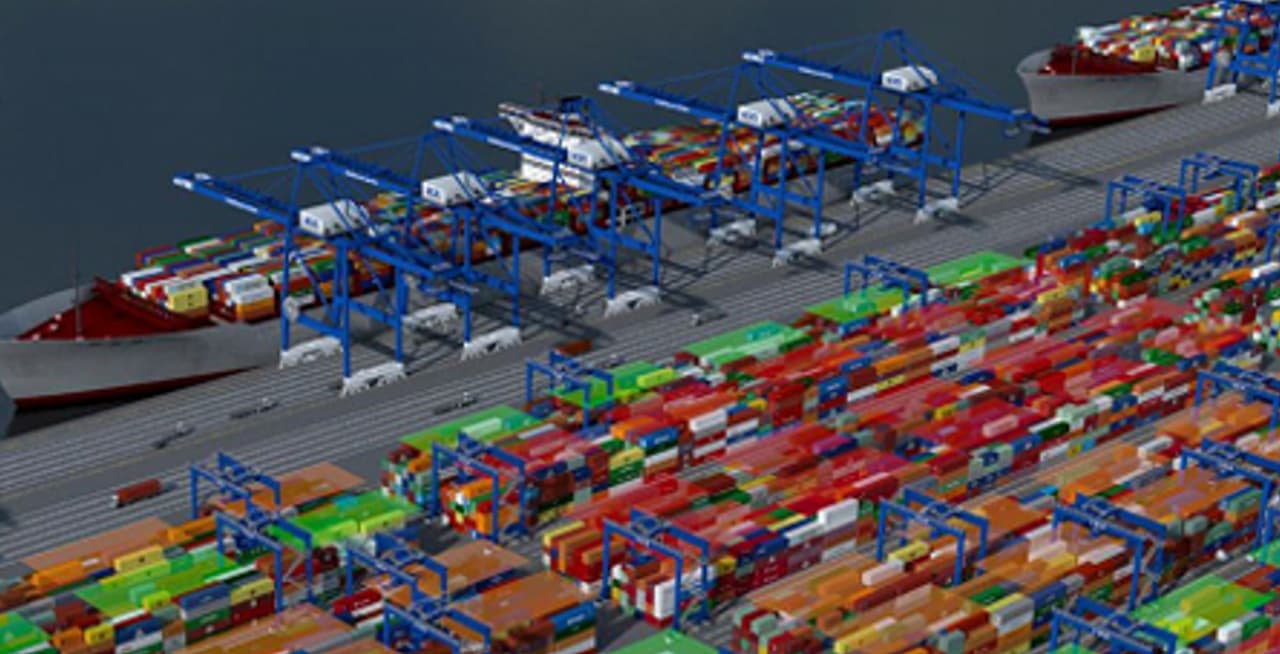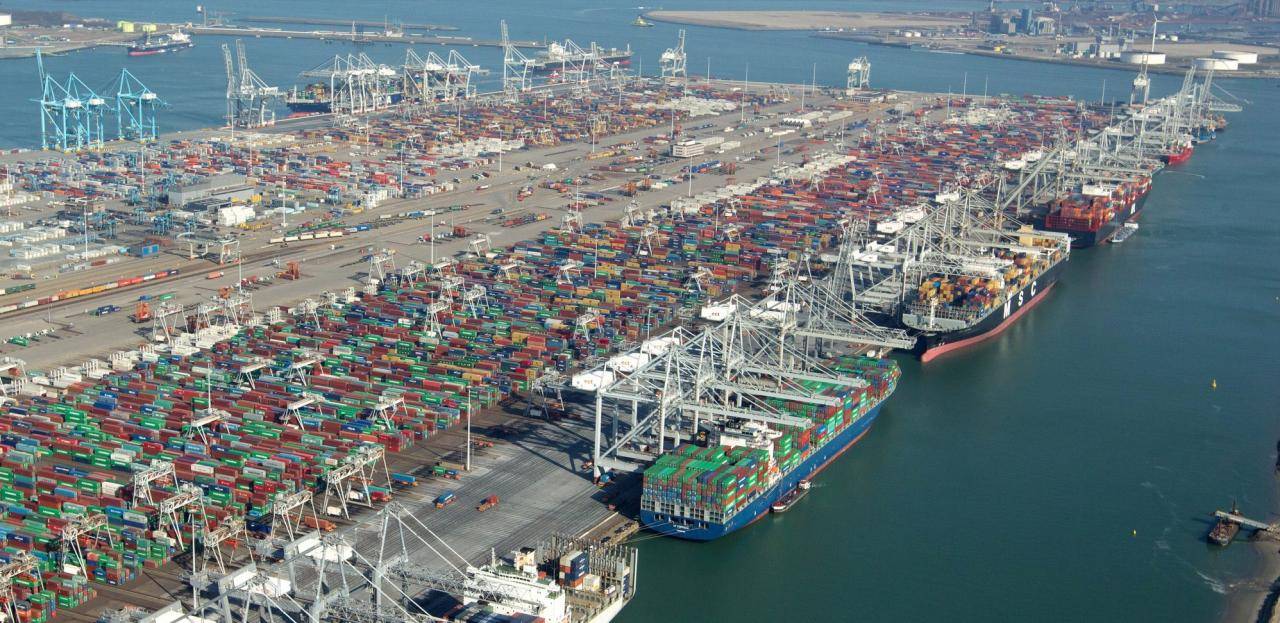Next generation training tools for the container industry
Competition requires drastic measures
The container terminal industry is entering a new era. An era where profit margins will be reduced under pressure from the large alliances formed by the shipping lines, combined with the necessity to invest in the capability to handle the largest vessels and the limited volume growth expected in the foreseeable future.
This means that container terminals need to get their act together, become more efficient and effective, and offer a compelling product to the customers. A big part of operational improvement lies in business intelligence: creating better control over the cargo flow across the terminal, getting more insight in what is going to happen, and getting grip on the uncertainties.
Better trained workforce as the answer
Although there is a whole market of tools that can support this “intelligence”, it will also come down to a skilled and well-trained workforce. A workforce that is able to plan ahead, analyse, quantify and decide, rather than fire-fight, which is often observed in terminals. A thorough game-plan starts with a well organized DMAIC (define, measure, analyze, improve, control) cycle, internalized in the day to day operation.
How can we prepare the workforce better, and train them to deal with optimization under uncertainty? The answer in our view lies in gamification: creating ‘near to live’ training circumstances through simulation, combined with the real IT environments people are dealing with. Whether it is a terminal truck driver, a hatch clerk, a vessel planner, or a shift manager: all contribute to a smooth and productive operation, and are continuously interacting with and through the various IT systems present in the terminal.
The clearest, and best-known example of using simulation technology is the quay crane simulator, most vendors offer. Although typically not connect to the terminal operation, the cranes simulators represent the crane control operation in great detail, providing an environment where people can be trained until they are ready for the job. Similar experiences can be found in other industries with airplane pilots and Formula 1 drivers as best examples. Where a Formula 1 driver spends as little as 70 – 100 hours per year (!) in a real car, he tends to train in a simulator for as much as 2 – 4 hours per day.
Why has this practice not found its way across other industries to the level possible? Looking at the results we have achieved in the last 10 years in our training practice, it seems illogical that this is not taken more seriously. Where large sums are spent on simulators for quay crane operators, and sometimes RTG and Straddle operators, we see quite limited investment in training other staff. At the same time, we find that in planning and control at terminals, many mistakes are being made. Mistakes with impact on productivity (in the range of 10-30%) and hence terminal efficiency. It goes without saying that the return on investment of regular, comprehensive training will be short (typically months rather than years).
Near to live training
The solutions we have created consist of 4 key components:
- A copy of the real software environment people use in their daily operations (e.g. TOS, ECS, RDT’s).
- A valid, and detailed representation of the physical world (equipment, containers, ships, trucks, etc.) realized through simulation, combined with virtual reality tools.
- An operational scenario, captured in a so-called dataset (containing a real yard, real container moves, and real-life events).
- A toolset to measure the efficiency and effectivity of the operation in Key Performance Indicators (KPI’s), such as vessel turn time, quay crane productivity, equipment running hours, labour hours, truck turn time.
Playground for control room staff
With this combined environment, we are able to run an iterative training process in which trainees can freely play around, try out, and experiment, without the possible negatives of mistakes they face in real operations. The dynamic interaction between their planning, scheduling, deployment and dispatching decisions is taken in real-time into the systems, and providing feedback, visually and through detailed statistics. In PTI 65, we (Saanen and Koekoek) already referred to an extensive study by Sitzmann (2011), emphasizing the effect of learning by doing largely exceeding other forms of learning.
In order to create a learning effect, our training approach loops 3 times through the same cycle of planning, execution, and analysis. The learning effect can be measured from the achieved (vessel) productivity. This is either measured by run a planned operation overnight (without human interference), or while the people are still operating.

Figure 1: Iterative training methodology
Besides the human impact (planning or execution decisions), variations can be applied in the software environment used. As such we have experimented in the use of various NAVIS advanced applications in the training setting (e.g. Autostow, Prime Route and Expert Decking). As such, comparisons could be made between planning and execution processes with and without the use of such tools.
Findings and experiences
Findings from such training sessions can be summarized as follows:
- In general, unprepared trainees make many mistakes in their typical work, having serious impact on productivity
- By practicing best practices, they are able to improve their planning and execution work in a relatively short amount of time.
- The use of advanced tools generally improves productivity, as people can focus on the more complicated tasks, as the bulk of the work gets handled automatically.

Figure 2: Trainees using Autostow from NAVIS exceeding the performance of vessel planners not using Autostow
Other findings from these training sessions:
- The follow-up in the organization afterwards, including management support to implement new (best) practices is cumbersome, and is certainly not guaranteed.
- Staff assigned to the planning and execution jobs in the control room are not used to using detailed statistics to analyse what has happened, and how things can be improved in a structured and systematic way.
- The training environment is recognized as realistic and representative for live operations.
Learning anytime, anyplace
In order to enable the trainees to follow-up more regularly on their skill set, ‘near to live’ training sessions should be repeated regularly (at least once a year, we’d reckon). Currently, we are not aware of any terminal operator doing such.
A way we intend bringing this closer to the terminal industry is through the PTI-TBA training portal. This port, live since the summer of 2016, brings extensive best practices to control room staff, and provides not only training material, but also tests to verify the knowledge and capabilities of the trainees.
In the near future, the portal is to be expanded with on-line access to our ‘near to live’ training environment, such that trainees can practice their skills and get feedback. Trainees can at all times monitor their progress, and benchmark their capabilities against peers.

The training portal is already being used by over 1000 terminal professionals, from senior staff to supervisors, with the emphasis on the various planning jobs.
Future outlook
It is our belief that training can seriously contribute to a terminals competitiveness. Improved motivation and capabilities of terminal staff will in all areas reduce inefficiency, and provide better service levels to the customer. Constant learning, but also measurement and benchmarking is key, and may even involve to certification of specific roles, such as vessel planning, vessel supervision, yard planning, dispatching, etc. It may also lead to further developing multi-skilled staff, who can see the terminal as a system, approaching problems from a holistic point of view.
A further development is the use of ‘near to live’ training for staff working outdoors. Mechanics, checkers, supervisors, foremen; all are interacting with systems, and the more complex the environment gets, the more training they need. Besides, safety comes into play when stepping beyond the control room. Following best practice operating procedures is required to minimize injuries in terminal operations. Also training these circumstances is technically feasible, yet relatively expensive, as it requires detailed 3D depiction of the live operations before people start accepting such training methodologies. However, they are far ‘cheaper’ than the lives terminal operations take, in many places every year.
So, from terminal management a mindset changed is required, to put training higher on the agenda. Today, training budgets are (very) limited, where the business case for additional training is a no brainer.
This article has been published in Port Technology March 2017
Share this
You May Also Like
These Related Stories

Increase your RTG productivity by 10% within a ROI in less than 6 months

How can simulations help ports and terminals?
